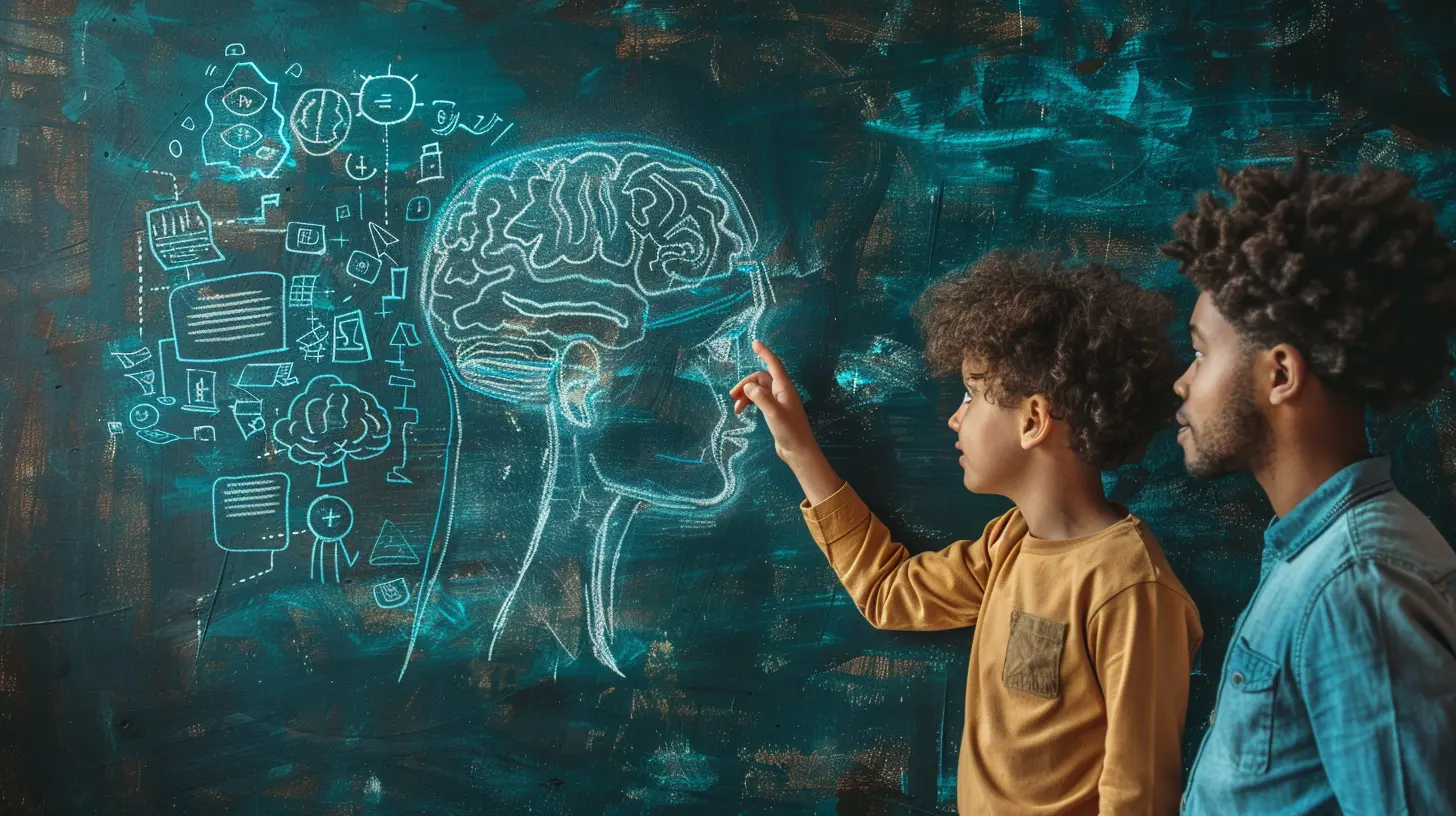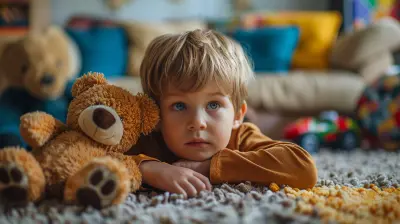The Neuroscience of Discipline: How the Brain Shapes Behavior
17 August 2025
Discipline—it's one of the most debated and challenging aspects of parenting. As parents, we constantly ask ourselves: Am I being too strict? Too lenient? How do I ensure my child grows up with good behavior and self-control?
The good news? Science has some answers. Understanding how the brain processes discipline can help you shape your child's behavior in a way that fosters long-term success, emotional regulation, and self-discipline.
In this article, we’ll dive deep into the neuroscience behind discipline, how the brain learns from both rewards and consequences, and practical strategies to guide your child’s development. 
How the Brain Develops Self-Control
The Prefrontal Cortex: The Brain’s “Control Center”
The prefrontal cortex (PFC) is the part of the brain responsible for decision-making, impulse control, and self-discipline. However, in young children, this area is still developing. In fact, the PFC isn't fully formed until the mid-20s!That’s why toddlers have tantrums, preschoolers struggle to share, and even teenagers can make impulsive decisions. They’re not choosing to misbehave; their brains are still learning how to regulate emotions and actions.
The Role of the Amygdala: The "Emotional Alarm System"
Now, meet the amygdala—the tiny yet powerful part of the brain that controls emotions and reactions to stress. When a child feels threatened, frustrated, or overwhelmed, the amygdala kicks in, triggering fight, flight, or freeze responses.Ever noticed how a child in full meltdown mode can't listen to reason? That’s because their amygdala has taken over, and their prefrontal cortex (the rational part) is temporarily offline. 
How Discipline Shapes Brain Development
The Power of Repetition and Consistency
You’ve probably heard the phrase “kids thrive on routine,” and there’s solid science behind it. The brain relies on neural pathways—connections formed through repeated experiences.Every time you enforce a rule consistently, your child's brain strengthens the pathways associated with self-control. Over time, good behavior becomes second nature.
Think of it like learning to ride a bike. The first few attempts are wobbly, but with enough practice, balance becomes automatic. The same goes for self-discipline!
Rewards and Consequences: How the Brain Learns
Behavior is shaped through reinforcement. The brain's reward system, primarily driven by dopamine, responds to positive experiences. When a child receives praise, a high-five, or a sense of accomplishment, their brain releases dopamine, reinforcing that good behavior.On the flip side, logical consequences help the brain connect actions with outcomes. If a child forgets their homework and has to explain it to their teacher, they’ll remember to pack it next time—because their brain links the experience with discomfort.
But here’s the key: Harsh punishment activates the amygdala, causing stress and fear. Instead of learning better behavior, the child focuses on avoiding punishment, which doesn't build true self-regulation. 
Effective Discipline Strategies Backed by Neuroscience
1. Teach, Don’t Just Punish
Discipline should be about teaching, not just penalizing. Instead of saying, "Stop yelling!" try, "I know you're frustrated. Let’s take deep breaths together and talk about it."By guiding your child through emotional regulation, you're helping their prefrontal cortex develop stronger self-control pathways.
2. Use Positive Reinforcement
Catch your child doing the right thing and acknowledge it! Simple phrases like "I love how you shared with your sister" or "That was really kind of you to help clean up" boost the brain’s reward system, making good behavior more likely.3. Set Clear and Consistent Boundaries
The brain craves predictability. When rules are inconsistent, the brain struggles to form reliable patterns, leading to confusion and testing of limits.Be clear about expectations: "We always wash hands before eating." Then, follow through consistently.
4. Stay Calm (Even When They’re Not)
When a child is in meltdown mode, meeting their emotional chaos with your own frustration only escalates things. Instead, model calmness. This helps regulate their nervous system and teaches them how to self-soothe.A simple trick? Lower your voice instead of raising it. It forces them to listen more closely while signaling safety.
5. Let Natural Consequences Teach Lessons
Instead of rushing to rescue your child from every mistake, let natural consequences play their role. If they refuse to wear a coat, they’ll feel cold and learn why it matters. If they don’t eat enough lunch, they’ll be hungry and remember next time.These real-life learning experiences strengthen the brain’s ability to make better choices. 
What Science Says About Harsh Punishments
Some parents believe that strict discipline—like spanking or yelling—is necessary for respect. But neuroscience suggests otherwise.Harsh punishment activates the stress response, flooding the brain with cortisol (the stress hormone). Over time, repeated exposure to high-stress discipline can shrink parts of the prefrontal cortex, impairing self-control and increasing anxiety.
Worse, it teaches children to associate discipline with fear rather than understanding. Instead of thinking, “I shouldn’t do that because it’s wrong,” they think, “I better not get caught.”
The Long-Term Impact of Positive Discipline
When discipline is approached as guidance rather than punishment, children develop:✔ Better emotional regulation – They learn to manage frustration and disappointment.
✔ Stronger impulse control – They think before they act.
✔ Higher self-esteem – They feel supported rather than shamed.
✔ Better relationships – They trust parents and develop healthier connections with others.
In the long run, kids disciplined with respect and understanding are more likely to become responsible, empathetic adults who make good decisions—even when no one is watching.
Final Thoughts
Discipline isn’t about controlling your child—it’s about helping their brain learn self-regulation. By using neuroscience-backed techniques like consistency, emotional coaching, and positive reinforcement, you can shape behavior in a way that nurtures long-term growth.So next time your child misbehaves, remember: their brain is still under construction. With patience, guidance, and a little neuroscience know-how, you're helping them build the foundation for a brighter future!
all images in this post were generated using AI tools
Category:
Discipline TechniquesAuthor:

Austin Wilcox
Discussion
rate this article
1 comments
Valencia Klein
Understanding our kids' brains makes discipline so much easier!
September 10, 2025 at 3:26 AM

Austin Wilcox
Absolutely! Understanding how children's brains work helps us tailor our discipline strategies to their developmental stages, making our approach more effective and compassionate.


